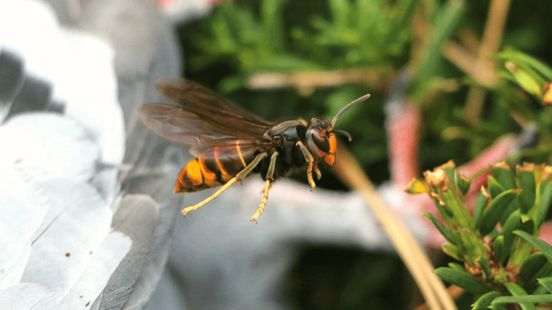Signaling and hierarchy
You can distinguish the Asian hornet from the European hornet by the following characteristics: 2 to 3 centimeters long, black thorax, dark ‘antennae’, yellow end of the legs, abdomen with two narrow and one wide orange band.
If you see an abnormally large wasp early in the spring, chances are it is a queen. That’s the ‘mom’ of all wasps. She’s born this way. She grows up, fledges and mates with a male wasp, which dies shortly afterwards. The queen then looks for a place where she can hibernate. A sheltered environment that protects against rain and other insects.
In the spring, the queen wasp wakes up from her hibernation and starts building a nest. She lays eggs and from them larvae hatch. These larvae become workers, which are a lot smaller than the queen. They continue to build the nest so that the queen can lay more eggs. In addition to workers, these eggs also produce males (drones) and future wasp queens.
The queens fledge from early October. There could be between 50 and 500. About 10 percent survive the winter. So it is extremely important to capture the queens and prevent them from making a nest.
